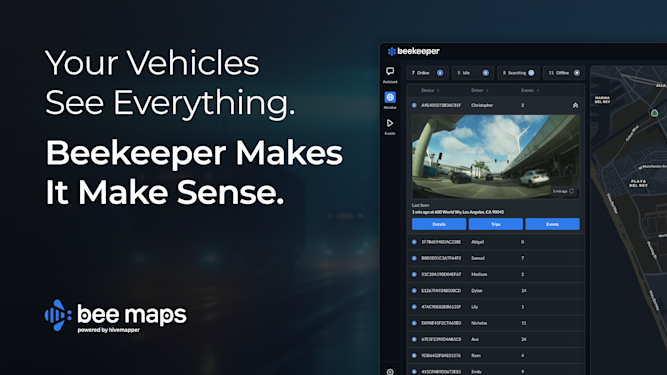The Latest Buzz
What is Point-to-Point Autonomous Driving?

Point-to-point autonomous driving refers to the capability of a autonomous car to navigate from one specified location to another without human intervention. If you've been to San Francisco since August 2022 you've likely seen p2p AVs in the form of the Waymo fleet of driverless cars.
Unlike traditional vehicles that require manual driving or assistance, point-to-point systems utilize sensor fusion, where data from different sensors use algorithms to make decisions on the road, ensuring a smooth and safe trip from start to finish.
How Does Point-to-Point Autonomous Driving Work?
Point-to-point autonomous driving involves several key steps that allow a vehicle to independently navigate to its destination:
- Route Planning: The vehicle starts by generating a route from its starting location to the desired destination using detailed maps and real-time data. This route takes into account traffic conditions, road types, and other variables to ensure the most efficient path.
- Sensor Integration: Autonomous vehicles use a combination of sensors, including LiDAR, radar, cameras, and ultrasonic sensors, to detect obstacles, road signs, lane markings, and other vehicles. This real-time data helps the car stay aware of its surroundings, even as conditions change along the route.
- Decision-Making Algorithms: The vehicle relies on AI-driven algorithms to make decisions while on the move. For instance, if it encounters a construction zone or an unexpected obstacle, the system adjusts the route or slows down to ensure safety. It processes data continuously to stay aligned with traffic laws and driving conditions.
- Dynamic Adjustments: As the vehicle progresses, it continuously evaluates its surroundings and makes dynamic adjustments. This means rerouting if there’s a sudden road closure or adjusting speed based on changing traffic conditions, all without the need for human input.
Why is Point-to-Point Autonomous Driving Important?
Point-to-point autonomy represents a significant step forward for the future of transportation. Here’s why it matters:
- Enhanced Convenience: This technology allows passengers to simply input a destination and let the vehicle handle the rest, making travel more convenient, especially for long-distance routes or daily commutes.
- Improved Safety: By reducing human error, which is a leading cause of road accidents, autonomous vehicles can help lower the overall number of crashes. The system’s ability to maintain a consistent awareness of the vehicle’s surroundings also reduces the likelihood of incidents caused by distractions or fatigue.
- Traffic Efficiency: Point-to-point autonomous systems can help optimize traffic flow by coordinating with other vehicles, using real-time traffic data, and adhering to optimal speeds. This results in smoother traffic patterns and can even help reduce congestion in busy urban areas.
What Are the Challenges of Point-to-Point Autonomous Driving?
While the concept is promising, implementing point-to-point autonomous driving comes with challenges:
- Mapping Accuracy: For autonomous vehicles to navigate effectively, they rely on highly accurate maps. Any errors in the map data could lead to route deviations or safety risks. This makes continuous map updates a necessity, especially in rapidly changing urban environments.
- Complex Environments: Driving in complex environments like dense city centers, where there are many pedestrians, cyclists, and unpredictable movements, can be more challenging for point-to-point systems compared to simpler highway driving. The technology needs to be sophisticated enough to handle these variations.
- Regulatory Barriers: Autonomous vehicles are subject to varying regulations across different regions. For point-to-point systems to be deployed at scale, consistent guidelines and policies must be established to ensure safety while fostering innovation.
The Future of Point-to-Point Autonomous Driving
As the technology behind point-to-point autonomous driving advances, it could reshape the way people think about transportation. It offers a glimpse into a future where cars not only drive themselves but do so with precision, safety, and adaptability.
How Can We Help?
At Bee Maps, we can provide a continuous source of real-time street imagery across the globe. This ensures your autonomous systems are updated with the most up-to-date and reliable data available.
Contact us today to see how our street-level imagery can make a difference in your self-driving vehicle projects!
Share Post


